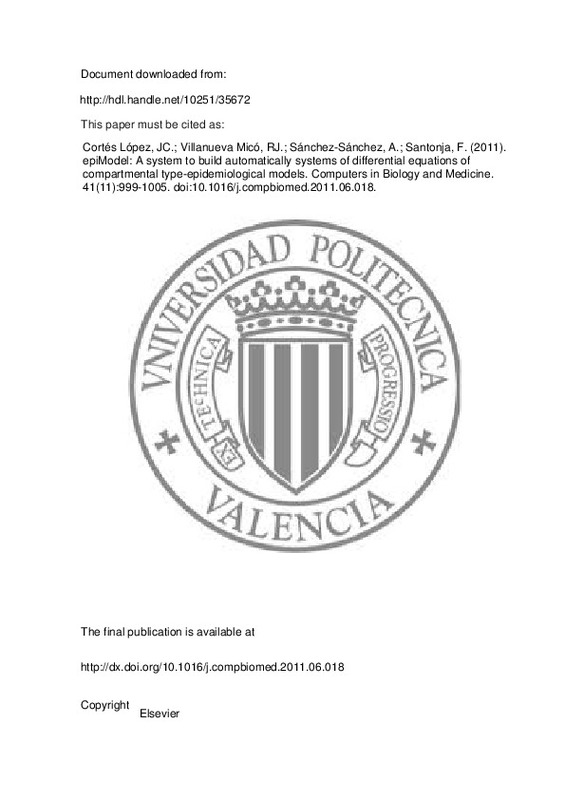JavaScript is disabled for your browser. Some features of this site may not work without it.
Buscar en RiuNet
Listar
Mi cuenta
Estadísticas
Ayuda RiuNet
Admin. UPV
Drying modelling of defrosted pork meat under forced convection conditions
Mostrar el registro sencillo del ítem
Ficheros en el ítem
| dc.contributor.author | Clemente Polo, Gabriela
|
es_ES |
| dc.contributor.author | Bon Corbín, José
|
es_ES |
| dc.contributor.author | Sanjuán Pellicer, María Nieves
|
es_ES |
| dc.contributor.author | Mulet Pons, Antonio
|
es_ES |
| dc.date.accessioned | 2017-02-21T11:08:32Z | |
| dc.date.available | 2017-02-21T11:08:32Z | |
| dc.date.issued | 2011-07 | |
| dc.identifier.issn | 0309-1740 | |
| dc.identifier.uri | http://hdl.handle.net/10251/78106 | |
| dc.description.abstract | Drying is the lengthiest and the most energy consuming step during the production of dry-cured ham, affecting also the curing process and consequently product quality. In order to manage the drying process, it is quite interesting to establish the complexity of model needed. For that purpose, pork meat cylinders (Biceps femoris and Semimembranosus muscles) were dehydrated under forced convection conditions (25°C and air velocity 0.6±0.1, 2.0±0.1 and 2.8±0.1m/s). Experimental drying kinetics were modelled by means of 4 diffusion models: model 1 (not considering shrinkage and no external resistance), model 2 (considering shrinkage and no external resistance), model 3 (not considering shrinkage and considering external resistance) and model 4 (considering both shrinkage and external resistance). From the effective diffusivity values identified, it was concluded that when external resistance was negligible (air velocity 2.0±0.1 and 2.8±0.1m/s), the results obtained for De with the four models were the same. Nevertheless, when external resistance was not negligible (0.6±0.1m/s) the De identified was influenced by the model due to the fact that models 1 and 2 neglect that resistance and for that reason they do not describe experimental conditions properly. The effect of shrinkage did not influence the identified De values for the drying conditions considered. In order to model water losses in meat curing chambers, external resistance must be considered. © 2011 Elsevier B.V. | es_ES |
| dc.description.sponsorship | The authors of this paper acknowledge the financial support from the "Ministerio de Educacion y Ciencia" in Spain, CONSOLIDER INGENIO 2010 (CSD2007-00016). | en_EN |
| dc.language | Inglés | es_ES |
| dc.publisher | Elsevier | es_ES |
| dc.relation.ispartof | Meat Science | es_ES |
| dc.rights | Reserva de todos los derechos | es_ES |
| dc.subject | Defrosted pork meat | es_ES |
| dc.subject | Drying | es_ES |
| dc.subject | Effective diffusivity | es_ES |
| dc.subject | External resistance | es_ES |
| dc.subject | Modelling | es_ES |
| dc.subject | Shrinkage | es_ES |
| dc.subject | Air velocities | es_ES |
| dc.subject | Biceps femoris | es_ES |
| dc.subject | Curing process | es_ES |
| dc.subject | Diffusion model | es_ES |
| dc.subject | Dry-cured ham | es_ES |
| dc.subject | Drying condition | es_ES |
| dc.subject | Drying kinetic | es_ES |
| dc.subject | Drying process | es_ES |
| dc.subject | Effective diffusivities | es_ES |
| dc.subject | Experimental conditions | es_ES |
| dc.subject | Pork meat | es_ES |
| dc.subject | Product quality | es_ES |
| dc.subject | Semimembranosus muscles | es_ES |
| dc.subject | Water loss | es_ES |
| dc.subject | Curing | es_ES |
| dc.subject | Cylinders (shapes) | es_ES |
| dc.subject | Diffusion | es_ES |
| dc.subject | Forced convection | es_ES |
| dc.subject | Meats | es_ES |
| dc.subject | Water | es_ES |
| dc.subject | Animal | es_ES |
| dc.subject | Article | es_ES |
| dc.subject | Biological model | es_ES |
| dc.subject | Chemistry | es_ES |
| dc.subject | Comparative study | es_ES |
| dc.subject | Food preservation | es_ES |
| dc.subject | Kinetics | es_ES |
| dc.subject | Meat | es_ES |
| dc.subject | Methodology | es_ES |
| dc.subject | PH | es_ES |
| dc.subject | Skeletal muscle | es_ES |
| dc.subject | Spain | es_ES |
| dc.subject | Swine | es_ES |
| dc.subject | Animals | es_ES |
| dc.subject | Hydrogen-Ion Concentration | es_ES |
| dc.subject | Models, Biological | es_ES |
| dc.subject | Muscle, Skeletal | es_ES |
| dc.subject | Sus scrofa | es_ES |
| dc.subject.classification | TECNOLOGIA DE ALIMENTOS | es_ES |
| dc.title | Drying modelling of defrosted pork meat under forced convection conditions | es_ES |
| dc.type | Artículo | es_ES |
| dc.identifier.doi | 10.1016/j.meatsci.2011.01.012 | |
| dc.relation.projectID | info:eu-repo/grantAgreement/MEC//CSD2007-00016/ES/PRODUCTOS CARNICOS PARA EL SIGLO XXI: SEGUROS, NUTRITIVOS Y SALUDABLES/ | es_ES |
| dc.rights.accessRights | Cerrado | es_ES |
| dc.contributor.affiliation | Universitat Politècnica de València. Escuela Técnica Superior de Ingeniería Agronómica y del Medio Natural - Escola Tècnica Superior d'Enginyeria Agronòmica i del Medi Natural | es_ES |
| dc.contributor.affiliation | Universitat Politècnica de València. Departamento de Tecnología de Alimentos - Departament de Tecnologia d'Aliments | es_ES |
| dc.description.bibliographicCitation | Clemente Polo, G.; Bon Corbín, J.; Sanjuán Pellicer, MN.; Mulet Pons, A. (2011). Drying modelling of defrosted pork meat under forced convection conditions. Meat Science. 88(3):374-378. https://doi.org/10.1016/j.meatsci.2011.01.012 | es_ES |
| dc.description.accrualMethod | S | es_ES |
| dc.relation.publisherversion | http://dx.doi.org/10.1016/j.meatsci.2011.01.012 | es_ES |
| dc.description.upvformatpinicio | 374 | es_ES |
| dc.description.upvformatpfin | 378 | es_ES |
| dc.type.version | info:eu-repo/semantics/publishedVersion | es_ES |
| dc.description.volume | 88 | es_ES |
| dc.description.issue | 3 | es_ES |
| dc.relation.senia | 214296 | es_ES |
| dc.contributor.funder | Ministerio de Educación y Ciencia | es_ES |






![[Cerrado]](/themes/UPV/images/candado.png)


